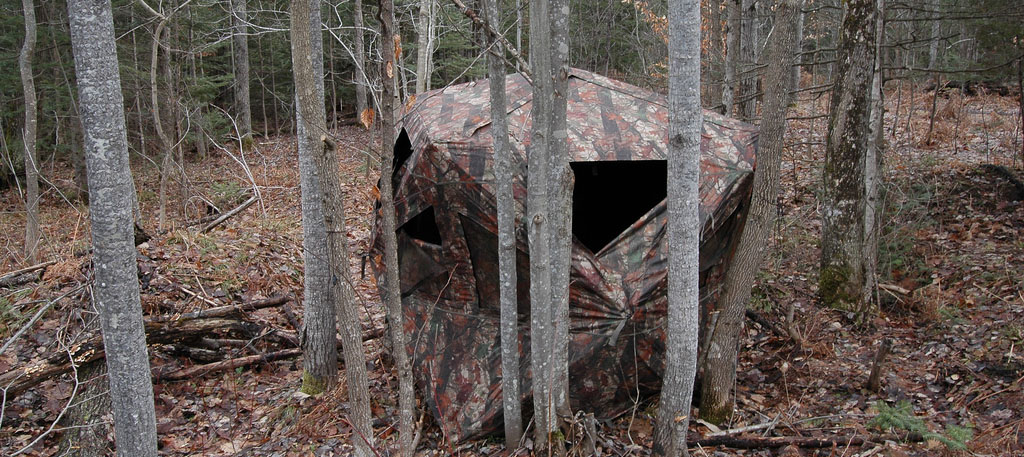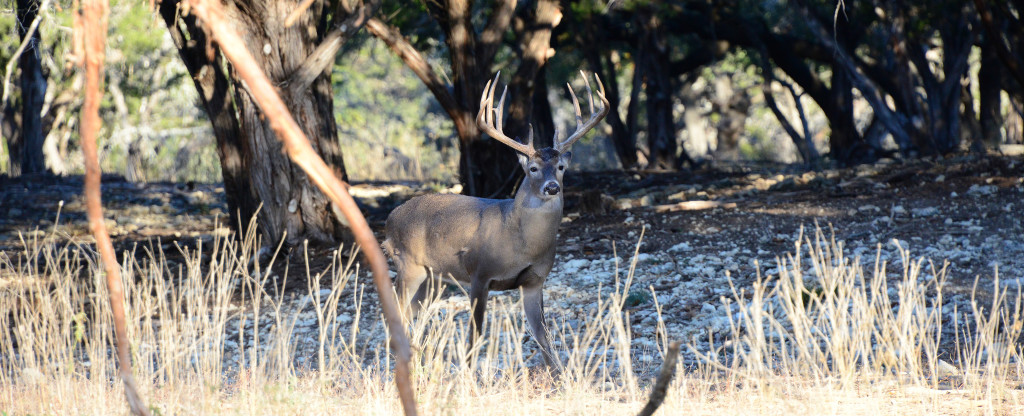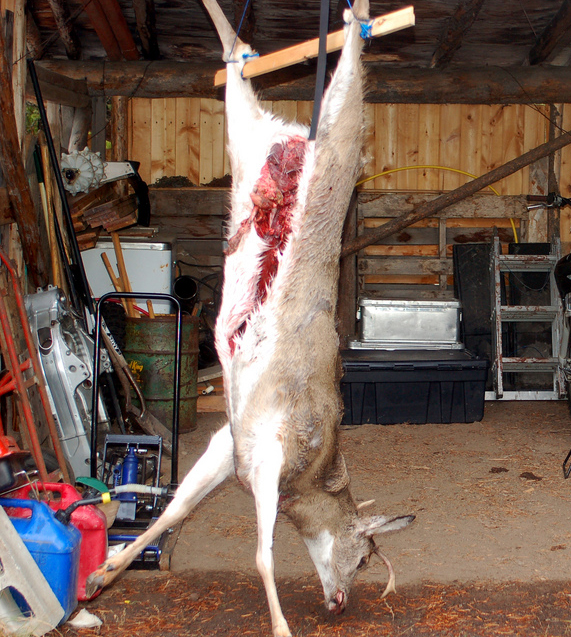 A block and tackle isn’t hard to make when you need to hang your kill, provided you have the right equipment handy.
A block and tackle isn’t hard to make when you need to hang your kill, provided you have the right equipment handy.
Bagging a deer, elk or bear is great, but there comes a time when you’ll probably want to hang it up. Unless you have several people with you, this could prove to be quite difficult to do, unless you have a block and tackle to work with. This device simply loops the rope through two or more pullies of some sort, making it far easier to hoist a few hundred pounds of dead-weight.
Commercially purchased block and tackles are available, but they are usually expensive. The good news is that you can make your own at a fraction of the cost. In fact, you should be able to do so for less than $30.
What you will need to make the block and tackle:
- 2 large metal carabiners, preferably three or four inches in length.
- 25 feet of stout rope rated high enough to carry at least double the expected load (the weight of the animal)
Putting it together
It needs to be explained that a carabiner is a loop of material, in this case metal, with a spring loaded gate that allows it to snap onto the rope easily. Since the gate is spring loaded, the device can also be removed, if needed.
 1. Roughly in the middle of the rope, tie a one foot loop in the rope using an overhand knot.
1. Roughly in the middle of the rope, tie a one foot loop in the rope using an overhand knot.
2. Clip one of the carabiners to this loop, then tie one end of the rope to a secure anchor, such as a tree with an overhanging stout branch that is about eight feet off the ground, or to a pillar beam in the garage.
3. Toss the rope over the branch or a rafter. Clip the other carabiner to the rope below the loop (on the other side that has the untied rope end) and thread the free end of the rope through the carabiner that is clipped to the loop.
4. Adjust the tension on the tied end of the rope so that the loop is located about a foot from the branch or rafter. You now have a workable block and tackle. By tying a length of rope around the legs of the animal and clipping this to the bottom carabiner, you can hoist the carcass up and then tie off the free end to hold the animal in place, off the ground.
 This may sound complex, but it really isn’t. The rope passes through one carabiner and then the other to make a pulley system. With one carabiner being fixed in place, the rope that is holding the deer, elk or bear is then clipped to the other carabiner, greatly increasing your ability to lift the weight up without a great deal of help. This system will work as well out in camp as it will at home, too.
This may sound complex, but it really isn’t. The rope passes through one carabiner and then the other to make a pulley system. With one carabiner being fixed in place, the rope that is holding the deer, elk or bear is then clipped to the other carabiner, greatly increasing your ability to lift the weight up without a great deal of help. This system will work as well out in camp as it will at home, too.
Note that with a larger animal, such as some elk, the supporting branch or rafter will need to be higher off the ground so that the carcass can be lifted completely off the ground. Also, in the case of deer and elk, you can make a careful cut between the leg bone and the Achilles tendon on both front or back legs. A 2×4 or similar can then be passed through both openings, the smaller segment of rope tied to the wood, and this clipped to the bottom carabiner of the homemade block and tackle. Doing this should allow you to hang the deer while still having the carcass spread open so the air can get to the interior, until the meat is allowed to age.
Image sourced and remixed from Jess Gibson
Images by Jack Keene and Shane



